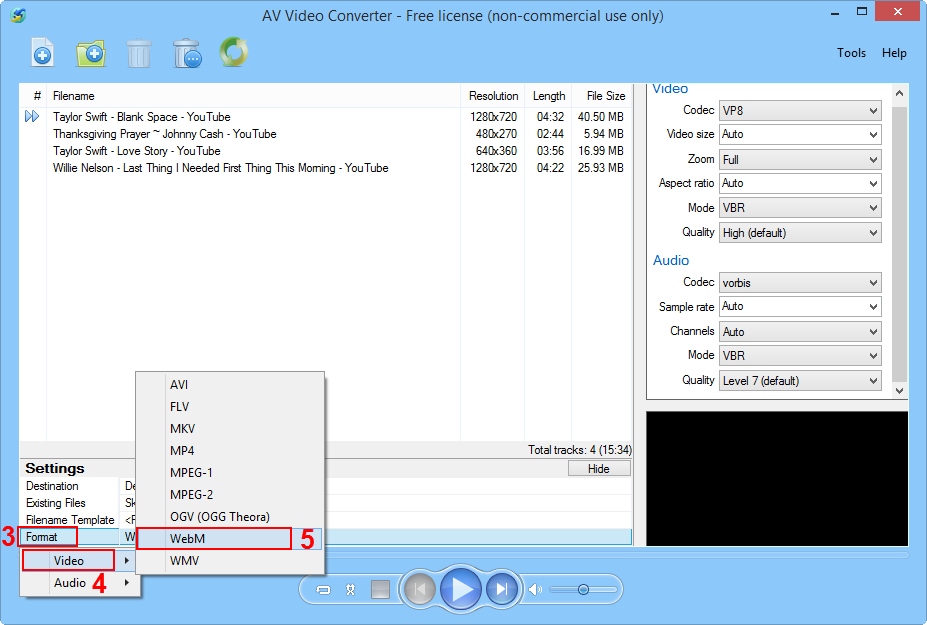
Not all browsers support the same codecs, so it’s important to create a video file and encode it with the correct codec that your target browser supports. The main reason for supplying multiple video sources is reach.

HTML5 AUDIO CODEC CODE
In the code above we’ve removed the src attribute and replaced it with three source child elements. This is a complete waste of bandwidth and totally unnecessary.
HTML5 AUDIO CODEC DOWNLOAD
If this is omitted, the browser needs to download a small piece of each file to work out if it’s supported or not. It’s important to note the type attribute.

But what happens if the browser doesn’t support the video you’re trying to play? To work around this issue you simply add multiple video sources. The reason earlier versions of IE display this message is simple: they don’t support the video tag. If the user is using an old browser, for example IE6, 7 or 8, they’ll see this message. Let’s use IE9 as an example to represent modern browsers. The video is downloaded in the background, so when the user does decide to watch the video, it starts immediately.

The video tag is awesome because it gives you the power to embed video content straight into the webpage without needing a third-party plug-in. If you’re unfamiliar with HTML5, before diving into this article you might like to read Yes, You Can Use HTML5 Today! and HTML5 and Even Fancier Forms. You don’t have to worry about users downloading the right plug-in or the complexities in supporting many of them. This is important if you want the playback to be streamlined. If you’re controlling these tags in JavaScript, this rendering can be offloaded to the GPU which helps in the responsiveness of the website. Playing a video in a hardware accelerated browser will use significantly less CPU power than it would in another browser. There are two big benefits to using video and audio tags: Modern browsers like Chrome, Firefox, IE9 ( and newcomer IE10) support a multitude of video and audio formats. This in turn is a big deal because it can save you plenty of development time. This is because these tags are embedded directly into the webpage.
HTML5 AUDIO CODEC INSTALL
Video and audio tags provide the developer with a rich UI without having to install third-party plug-ins like QuickTime, Flash or Silverlight.


 0 kommentar(er)
0 kommentar(er)
